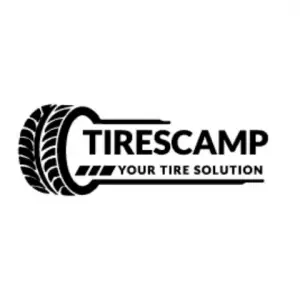Most people know that tires are composed of rubber and that their cars roll on them. They are likely unaware of everything else, including tires classified as Standard Load and Extra Load.
What is the distinction between Standard Load and Extra Load tires? Continue reading this article to discover more about the subject.
Standard Load vs. Extra Load Tires: Comparison
There are two different load capacities you should be aware of when it comes to passenger tires: Standard Load and Extra Load. (Technically, there is Light Load too, but as they are extremely rare and specific, we won’t discuss them.)
This classification indicates whether or not the tire is produced with a reinforced construction rather than its load index, which indicates how much load a tire can carry.
| Load Ranges | Abbreviation | Maximum Load Pressure |
| Standard Load | SL or Nothing | 240kPa (35psi) |
| Extra Load | XL | 280kPa (41psi) |
| Light Load | LL | 240kpa (35psi) |
A Standard Load (SL) tire is a tire whose load capacity is essential for the tire size (indicated by the load index). The maximum load pressure for SL tires is 35 psi. The tires lack reinforcement in their internal structure but can support the weight and sustain the pressure that the load index specifies on their sidewalls.
These tires are mainly produced for passenger cars that are utilized for everyday driving and are not used to ferry heavy goods. Because they are the most typical passenger tires, they come with an XL mark or nothing on their sidewall.
On the other hand, an Extra Load Tire is a tire with reinforced internal construction. The optimal load pressure for these tires is 41psi. Their internally reinforced construction results from using extra materials in the production process, commonly on the shoulder of the tires, for additional strength. The reinforcement also reduces the chances of tire damage due to road impact and lowers possible tire deflection.

Compared to the SL tires of similar size, the Extra Large tires are constructed to bear heavier load pressures. Hence their term,” Extra Load Tires.” As a result, they are frequently utilized in circumstances that require enhanced tire safety or a significantly high load capacity. If a tire is an Extra Load Tire, it will be indicated on its sidewall using one of the following ways: Reinforced, XL, or Extra Load.
Below is a table summarizing the other differences between Standard Load Tires and Extra Load Tires:
| Standard Load Tires | Extra Load Tires |
| Suitable for everyday use | Suitable for commercial use |
| They offer a comfortable ride | Offer enhanced handling and cornering capabilities |
| They are inexpensive | Suitable for light trucks and SUVs |
| They are quiet | Highly durable |
| Offer a bette fuel economy | Offer an extended treadlife under similar conditions |
| Can ferry heavy load | |
| They are capable of off-road driving though it is not recommended |
Standard Load (SL) vs. Extra Load (XL): Which One Should You Select?
The vehicle’s user manual usually indicates whether your vehicle requires an Extra Load Tire. If you wish to exchange your Standard Load Tires for Extra Load Tires, you can, but you need to know that the tire, vehicle control, and the feel on the road will be affected.
While you can replace your SL tires with the XL tires, it is not advisable to switch your XL tires for SL tires. If your car’s manual indicates that it requires Extra Load Tires, it is for a good reason. Sometimes it’s because the tires are necessary to support the car’s weight or ferry heavy loads.
Since the tire compound and the internal reinforced construction are designed to provide enhanced traction and endure high-speed driving, Extra Load tires are also designed for performance vehicles. SL tires will not sustain the pressure and can be dangerous in these circumstances.
So if your vehicle requires the XL tires, it is advisable to stick to that. If an Extra Load tire isn’t a requirement for your car, then you can choose if you want to swap the tires for the Extra Load ones or not.
If you own a high-performance car or use your car to ferry heavy goods, the Extra Load tires might be a suitable option. However, the SL tires will work just as well for such a car.
Frequently Asked Questions (FAQ)
Is a load Range XL Better than E?
| LT-Flotation, LT-Metric, and LT-Numeric Light Truck Tires | |||
| Load Range | Abbreviation | Ply Rating | Maximum Load Pressure |
| B | B | 4 | 240kPa (35psi) |
| C | C | 6 | 350kPa (50psi) |
| D | D | 8 | 450kPa (65psi) |
| E | E | 10 | 550kpa (80psi) |
| F | F | 12 | 650kPa (95psi) |
XL tires are the heavy-duty versions of a passenger tire. In contrast, the E-rated tires are the standard tires for light trucks. XL tires will offer you a smoother ride. E-rated tires, on the other hand, are designed to be used on heavy vehicles and will help you ferry heavy goods.
Are XL Tires Stronger?
If your car requires XL tires, there is a reason for it. XL stands for Extra Load tires. These tires have strong sidewalls that are capable of handling heavy loads.
Do XL Tires Ride Rough?
Compared to the SL tires, XL tires ride rough. They produce a lot of noise that can lead to uncomfortable driving.
Do XL Tires Require More Pressure?
Reinforced tire’s load capacity lowers with reducing air pressure. For this reason, XL tires require higher air pressure. This is the only way to maintain their higher loading capacity.
Are SL Tires Lighter than XL Tires?
Both tires have a similar size. Their main difference is in the weight each of the tires can support. The XL can support heavier loads compared to the SL.
Is Higher Load Rating Better?
A tire’s load rating is located on its sidewall and is indicated by a numeric value. The higher the load rating, the stronger the tire.
Final Take
We hope this article helped you understand the differences between Standard Load (SL) and Extra Load (XL) tires. When deciding which one is better for your car, jus keep the following in mind:
- It is possible to swap SL tires for XL
- You should not change to SL tires if your vehicle requires XL tires
- XL tires can also be utilized on high-performance cars
